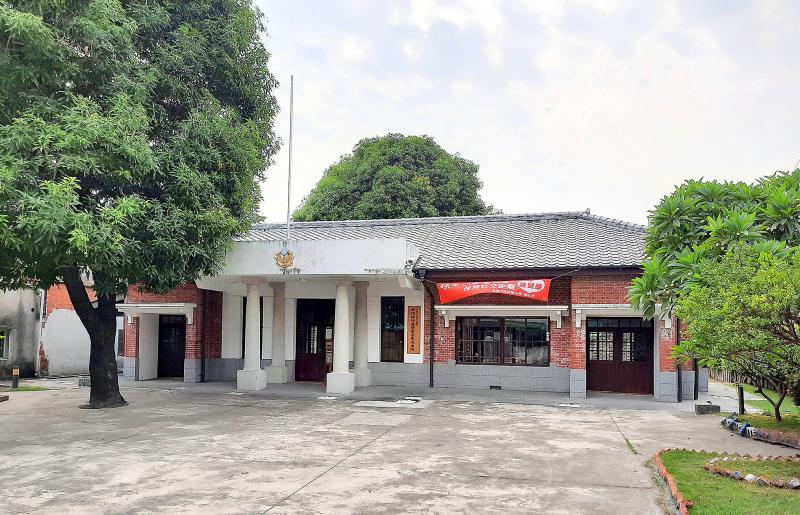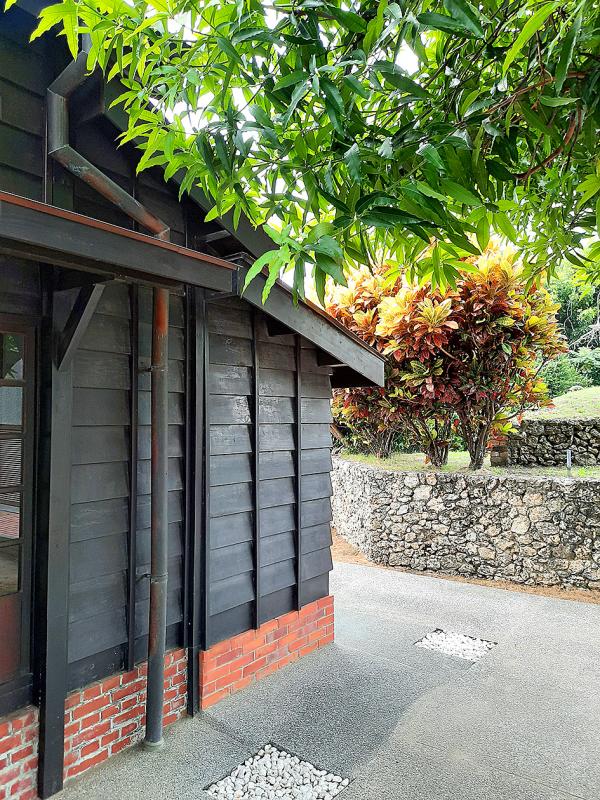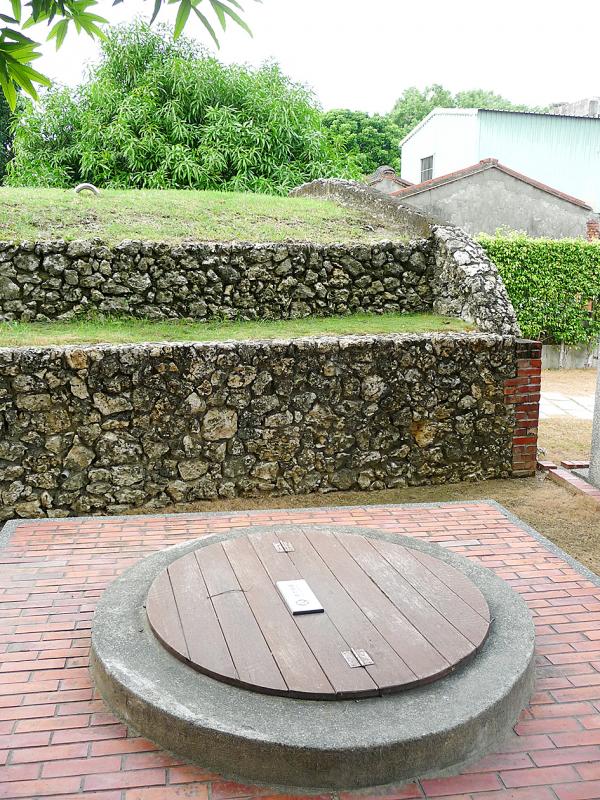When Japan seized Taiwan in 1895, establishing control of the island’s major settlements and harbors was fairly straightforward. But imposing colonial rule on people who’d never encountered effective modern government was altogether more difficult.
If all you have is a hammer, everything looks like a nail. Japan’s initial efforts to govern Taiwan therefore relied on the firepower and mobility of an army that had needed less than four months to sweep aside opposition to the takeover.
According to Gunnar Abramson, writing in PSU McNair Scholars Online Journal in 2004, the first governors-general appointed by Tokyo, “instituted a large-scale policy of bandit suppression [using] military forces to patrol rural areas and police to patrol the cities.”

Photo: Steven Crook
Abramson says that the colonial regime’s draconian methods backfired. The Japanese eventually recognized that their approach, “did little to dent criminality or anti-Japanese agitation… Sometimes the tactics transformed once placid areas into locales rife with anti-colonial sentiment.”
It was into this morass that Goto Shinpei stepped. Goto, who served as chief civil administrator in the colonial government from 1898 to 1906, believed that (to use Abramson’s words) “perpetuating native traditions where they happened to converge with Japanese interests” would help avoid antagonizing the population of Taiwan. Building on the Qing Dynasty’s baojia (保甲) system of neighborhood and community responsibility, he instituted what became known as the Hoko system.
The Hoko system became a mechanism through which the authorities kept tabs on the population, communicated new laws and regulations, tried to rehabilitate opium smokers, and encouraged residents to report infectious diseases and suspicious-looking outsiders, while collecting taxes and issuing fines. A failure to obey the rules could bring punishment for the entire ko (usually 10 neighboring households). Whenever a person was convicted of a serious crime, the others in his ko were fined for their “negligence.”

Photo: Steven Crook
Integrating the Hoko system with local police made both more effective. During Goto’s time in Taiwan the colonial government established police stations in every part of the island.
In the highlands, the police had additional duties. They operated schools that were part of the colonial authorities’ efforts to turn Aborigines into compliant subjects (“savage children’s educational institutes”), controlled the rifles which Aboriginal men used for hunting and operated barter stations where Aborigines could exchange mountain produce for cloth, needles, salt and other goods.
A few Japanese-era police stations survive. The one at Neiwan Township (內灣) in the hills of Hsinchu is authentic yet tatty. The two profiled in this article are far more photogenic.

Photo: Steven Crook
DINGLING ZIHBIAN POLICE STATION
Kaohsiung’s Linyuan District (林園) is notoriously industrial, but in the old town center there’s a carefully restored former police outpost.
When Dinglin Zihbian Police Station (頂林仔邊派出所) was established in 1898, this was a rural area. Within a few years, however, the neighborhood had gained a market, a school and a local government office.

Photo: Steven Crook
In 1909, the powers that be decided to rebuild the police station. Eighty-one local worthies donated money to help pay for the new station, and their names are listed in the small exhibition inside the brick-and-concrete front building.
In this respect, Japanese rule wasn’t so different from the Qing era that had preceded it. In both periods, the wealthy were encouraged to subsidize public works
The footprint of structures on this site changed several times between 1909 and the most recent renovation, which was completed in 2012. Only the front building has remained more or less the same. The pond behind it had been filled in by 1981.
Until 1933, when the roster was expanded, just two police officers were assigned to the station. Usually, the senior of the two was Japanese.
The lack of parking and internal space caused Linyuan’s police unit to move to nearby Linyuan North Road (林園北路) in 1989. Parts of the old station then served as a police dormitory.
Compared to what can be seen inside Yuanlin Police Museum (員林警察故事館, see “The landmarks of Yuanlin” in the Aug. 9, 2019, Taipei Times), the displays in Dinglin Zhibian Police Station are disappointing — but the two single-story buildings open to the public are splendid examples of Japanese architectural elegance.
The rear building is mostly wooden. Taller people should watch their heads when exploring the tatami-floored interior; the doorways date from a time when even members of the police force were usually shorter than 1.7m.
Within the grounds there’s also an old well and an air-raid shelter. The latter, which was built using coral stone, also served as the station’s cellblock. During the colonial era, the police were legally empowered to hold suspects and troublemakers without charge for up to 29 days.
Directions
Take the Kaohisung Metro to Siaogang (小港) at the southern end of the Red Line, then a #R3 bus into Linyuan. Get off at Singfu Park (幸福公園), then walk north along Fusing Street (福興街) for 500m. You’ll see the former police station on your left at number 97. It’s open from 10am to 5pm Tuesday to Friday, and 9am to 5pm on weekends. Admission is free.
SANTIAO POLICE STATION
Unlike Dinglin Zihbian Police Station, Santiao Police Station (三條派出所) in Changhua County’s Sijhou Township (溪州鄉) has never ceased functioning as a law enforcement outpost.
This quaint chalet-like structure has stood here since 1933, when a local landowner surnamed Liao (廖) handed the plot to the authorities. According to official records, he agreed to its use by the police permanently and without compensation.
Liao’s descendants disputed this, and from 1961 they filed lawsuits seeking the land’s return. Finally, in 2009, a court agreed with the plaintiffs. If this had been a piece of farmland, the handover would likely have been completed soon thereafter. However, the station, which was built using top-grade hinoki cypress, and which came through the 921 Earthquake undamaged, is said to be the only colonial-era wooden official building surviving in Changhua County.
Alarmed by the prospect of the station being demolished, activists lobbied Changhua County Government to declare the building a relic protected by the Cultural Heritage Preservation Act. Liao’s descendants seem to have been placated (no new lawsuits have been reported, at least) while heritage enthusiasts are breathing more easily. Santiao Police Station may yet see its 100th anniversary.
Directions
The station is on the corner of Jhongyang Road (中央路) Section 2 and Nanjiujia Lane (南九甲巷). The nearest bus stop, Santiao Elementary School (三條國民小學), is served by the thrice-daily #8A service, which can be boarded at both the conventional train station in Tianjhong (田中) and Changhua High-Speed Railway Station. No other public transportation stops within 1.3km of the police station.

April 14 to April 20 In March 1947, Sising Katadrepan urged the government to drop the “high mountain people” (高山族) designation for Indigenous Taiwanese and refer to them as “Taiwan people” (台灣族). He considered the term derogatory, arguing that it made them sound like animals. The Taiwan Provincial Government agreed to stop using the term, stating that Indigenous Taiwanese suffered all sorts of discrimination and oppression under the Japanese and were forced to live in the mountains as outsiders to society. Now, under the new regime, they would be seen as equals, thus they should be henceforth

Last week, the the National Immigration Agency (NIA) told the legislature that more than 10,000 naturalized Taiwanese citizens from the People’s Republic of China (PRC) risked having their citizenship revoked if they failed to provide proof that they had renounced their Chinese household registration within the next three months. Renunciation is required under the Act Governing Relations Between the People of the Taiwan Area and the Mainland Area (臺灣地區與大陸地區人民關係條例), as amended in 2004, though it was only a legal requirement after 2000. Prior to that, it had been only an administrative requirement since the Nationality Act (國籍法) was established in

With over 80 works on display, this is Louise Bourgeois’ first solo show in Taiwan. Visitors are invited to traverse her world of love and hate, vengeance and acceptance, trauma and reconciliation. Dominating the entrance, the nine-foot-tall Crouching Spider (2003) greets visitors. The creature looms behind the glass facade, symbolic protector and gatekeeper to the intimate journey ahead. Bourgeois, best known for her giant spider sculptures, is one of the most influential artist of the twentieth century. Blending vulnerability and defiance through themes of sexuality, trauma and identity, her work reshaped the landscape of contemporary art with fearless honesty. “People are influenced by

The remains of this Japanese-era trail designed to protect the camphor industry make for a scenic day-hike, a fascinating overnight hike or a challenging multi-day adventure Maolin District (茂林) in Kaohsiung is well known for beautiful roadside scenery, waterfalls, the annual butterfly migration and indigenous culture. A lesser known but worthwhile destination here lies along the very top of the valley: the Liugui Security Path (六龜警備道). This relic of the Japanese era once isolated the Maolin valley from the outside world but now serves to draw tourists in. The path originally ran for about 50km, but not all of this trail is still easily walkable. The nicest section for a simple day hike is the heavily trafficked southern section above Maolin and Wanshan (萬山) villages. Remains of